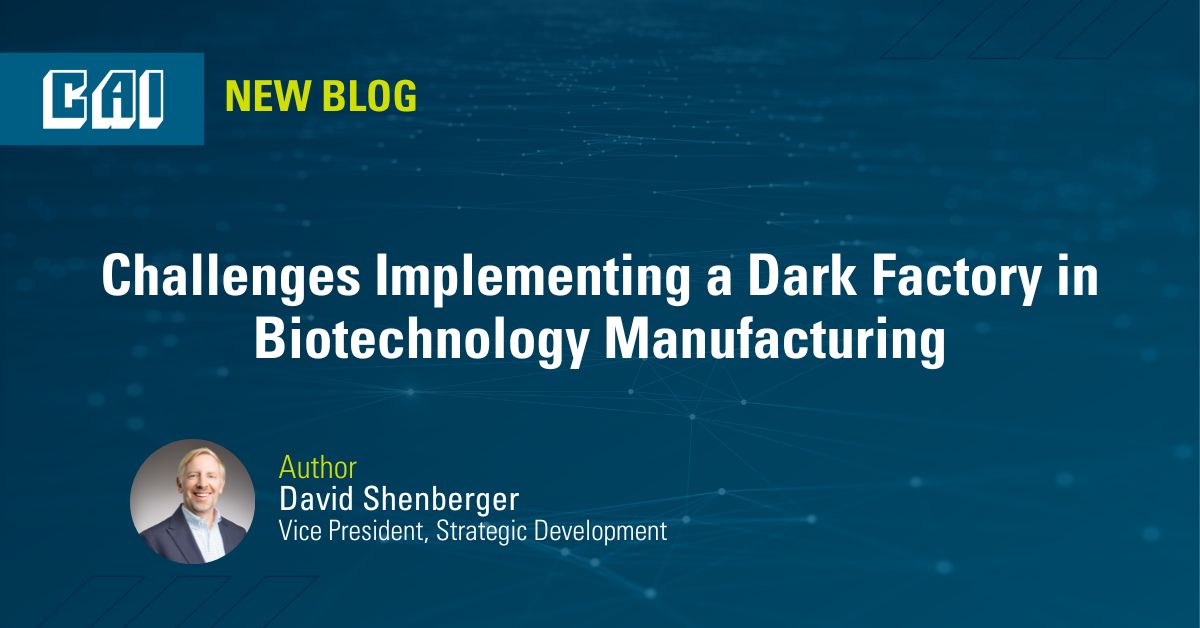
Challenges Implementing a Dark Factory in Biotechnology Manufacturing
The concept of a “dark factory” conjures images of secrecy and clandestine operations, but in the world of biotechnology manufacturing, it represents an innovative approach to production that promises increased efficiency, quality, and safety. A dark factory is an automated facility that minimizes human intervention, and the operations are primarily conducted by advanced technologies such as robotics, augmented intelligence, and the Internet of Things (IoT). While this model holds immense potential for biotech manufacturing, it also presents a unique set of challenges. This post explores the hurdles faced by manufacturers implementing a dark factory in the biotechnology sector.
Regulatory Compliance
The preeminent challenge in adopting a dark factory model for biotechnology manufacturing is ensuring compliance with stringent regulatory standards. Transitioning to a dark factory model requires companies not only to comply with current Good Manufacturing Practices (cGMP) to document and validate every aspect of their automated processes, but also to maintain the validated state without human interaction and primary oversight.
The integration of advanced technologies such as machine learning algorithms and robotic systems necessitates not only compliance with existing regulations but also ongoing alignment with the new standards issued to control to these innovations. Keeping pace with evolving regulations is an ongoing challenge that companies must address.
Data Security and Integrity
Biotechnology manufacturing involves sensitive data related to research, development, and production processes. In a dark factory, where data transmission and storage are solely reliant on digital systems, the risk of cyberattacks and data breaches looms large. Ensuring the security and integrity of data is paramount, as unauthorized access or manipulation carry severe consequences for product quality and patient safety.
Companies must invest in robust cybersecurity measures, including encryption, access controls, and intrusion detection systems, to protect their data assets. They must also establish robust data validation processes to ensure that the data generated and utilized in a dark factory remains accurate and reliable throughout the manufacturing lifecycle.
Workforce Transition and Development
The shift towards a dark factory model implies a reduced need for human operators on the production floor. While this shift can lead to increased efficiency and cost savings, it also presents a significant workforce transition challenge. Companies must carefully manage the impact on employees, including potential job displacement and the need for retraining.
Dark factory operations require operations, maintenance, and quality professionals with unique skillsets who can make complex decisions about the state of the facility, quality of the product, and validity of data when the factory experiences process upsets and situations where the automation and controls cannot operate in dark mode.
Ensuring a smooth transition often requires upskilling or reskilling existing workers to operate and maintain the advanced technologies employed in the dark factory. Companies should consider how to retain institutional knowledge and expertise as experienced workers are phased out.
Capital Expense and Return on Investment
Implementing a dark factory model demands substantial capital investment. The cost of acquiring and integrating advanced automation technologies, robotics, and IoT systems can be prohibitively high, particularly for smaller biotechnology companies. Overcoming this financial hurdle necessitates careful planning, budget allocation, and a well-defined return on investment (ROI) strategy.
The long-term benefits of reduced operational costs, increased productivity, and enhanced product quality that a dark factory can offer must be weighed against the upfront investment cost in both budget and time. While the initial investment may be steep, the potential for substantial savings over time makes it a worthwhile endeavor when developed with experienced partners and when using well developed budgets and timelines.
Asset Management and Reliability
Maintaining the reliability of the automated systems in a dark factory is crucial for uninterrupted production. These advanced technologies are not immune to breakdowns, malfunctions, or wear and tear. Companies must implement predictive maintenance programs to ensure the continued smooth operation of their facilities.
Predictive maintenance, which uses data analytics and IoT sensors to anticipate equipment failures, can help prevent costly downtime and delays in production. It requires the establishment of a comprehensive data infrastructure to continually monitor the health of machines and systems.
Scalability and Flexibility
The biotechnology sector is dynamic, with constantly evolving product lines and changing market demands. These facilities must be designed with scalability and flexibility to adapt to shifting production requirements. Companies must strike the right balance between automation and adaptability.
Incorporating modular and flexible automation solutions that can be easily reconfigured or expanded is essential. Companies must also consider how to integrate innovative technologies and processes seamlessly as they emerge, ensuring they remain at the forefront of biotechnology manufacturing.
Pulling It All Together
The concept of a dark factory holds immense promise for biotechnology manufacturing, offering increased efficiency, product quality, and safety. However, the path to implementing such a facility is fraught with challenges. There are many more hurdles to navigate than the ones discussed.
Despite these challenges, the potential benefits of a dark factory model cannot be understated. By addressing these obstacles with careful planning, innovation, and a commitment to adaptability, companies can harness the power of automation and technology to revolutionize their manufacturing processes, driving progress in the industry and improving patient outcomes.
Tags: Regulatory Compliance, dark factory, biotechnology manufacturing, automated facility, robotics, augmented intelligence, AI, internet of things, data security, cybersecurity


